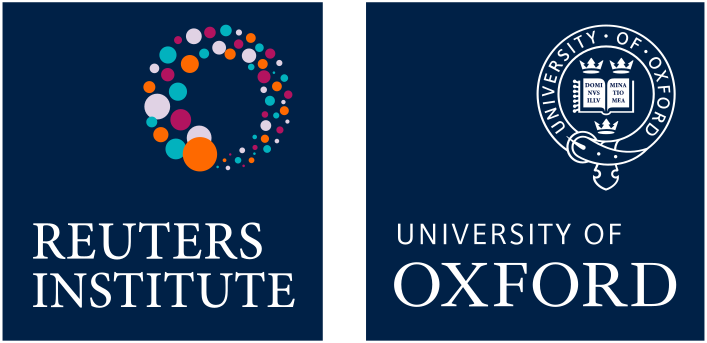
South Korea
News consumption has been steadily declining across all age groups for several years, more recently with a noticeable drop in news access through online portals in particular. The ongoing political upheaval might represent an opportunity of sorts for news brands, with trust ratings for major media, broadcasters and publishers alike, showing increases year on year.
The principal ongoing trend in South Korea’s media landscape has been the reduction in news consumption across all age groups.1 This trend seems to be affecting all sources of news, not just traditional outlets. The drop in the prominence of news through portals like Naver, which have for a long time played a central role in the distribution and consumption of news in South Korea, suggests that media organisations may need to reassess their digital strategies. YouTube is taking more attention, with 50% of our survey sample saying they use the platform for news each week, but the growing impact of creators and influencers has raised concerns about the quality of news circulating online.
At the same time, South Korea’s media industry is embracing artificial intelligence, with news organisations investing in AI-driven tools for automated reporting, content summarisation, recommendation algorithms, and graphics production. For example, Chosun Ilbo has developed an in-house AI capable of editing and translating, while Hankook Ilbo launched its AI service ‘H.AI.’ Maeil Business Newspaper introduced multilingual services which rely on AI translation. On the policy front, as the government is pushing for an AI bill, discussions are intensifying on how news outlets can both deploy AI responsibly and also protect copyright. KBS, MBC, and SBS have all sued local tech giant Naver for allegedly using their news articles in generative AI training. This marks the first time that Korean media have taken legal action against a big tech company over what they deem to be unauthorised use of news content.
Since late 2023 many major media companies have initiated sweeping layoffs (normally by way of voluntary redundancy or early retirement), with JTBC leading the way, followed by KBS, TBS, and SBS Medianet. The restructuring wave, which affected terrestrial broadcasters, general programming channels, and cable networks, was partly attributed to losses resulting from inadequate financial management, but the underlying cause was the shift in media environment, led by the rise of YouTube and OTT platforms. Broadcast advertising revenue fell sharply by almost 20% year-on-year,2 leading to sharp declines in income as younger audiences migrated to digital platforms. The growth of global OTT services also led to a spike in domestic content production costs. These layoffs are also heightening concerns about falling news quality and journalistic standards.
Investigative journalism is rapidly dwindling in South Korea. Major newspapers, including Kukmin Ilbo, Chosun Ilbo, and Segye Ilbo, have disbanded their investigative reporting teams. Broadcast networks are faring rather better, as KBS retains a four-person investigative team, and YTN and MBC also operate similar units, although SBS halved its ten-member team.3 Some newsrooms are adapting. Hankook Ilbo’s Excellence Lab fosters collaboration between investigative and news teams, while Dong-A Ilbo’s Hero Squad rotates frontline reporters through digital teams. These efforts aim to sustain investigative journalism by broadening participation, strengthening digital skills, and embracing new storytelling methods.
The ‘Disaster Reporting Guidelines’, established by the news industry after the Sewol ferry disaster in 2014, place clear emphasis on the importance of accuracy, prevention of secondary harm, minimisation of social unrest, and the protection of victims’ rights in news reporting. However, the coverage of the Jeju Air disaster exposed some remaining shortcomings – unverified rescue figures, collision broadcast footage without filters, and fear-inducing videos. Some media outlets even published passenger lists, a major privacy breach. This experience suggests that the guidelines have not been fully internalised by field reporters and newsroom editors. However, some improvements emerged. Broadcast associations issued guidelines swiftly, while civic groups like the Citizens’ Coalition for Democratic Media strengthened their monitoring. News outlets also responded with quicker apologies.
In December 2024, President Yoon Suk Yeol’s declaration of martial law plunged the country into chaos, leading to a rapid spread of misinformation and rumours on social media. In response, major news organisations strengthened their fact-checking efforts, emerging as crucial sources of reliable information. While misinformation circulating on social media and YouTube fuelled social unrest, traditional media brands made some progress in regaining public trust by reinforcing fact-based reporting, highlighting the role of objective and accurate journalism in restoring credibility amid societal turmoil.
Hyun-Woo Lee and Chang-Young Jeon
Senior researchers at the Korea Press Foundation
Changing media
Online portals such as Naver still hold the largest share of news consumption overall, followed by broadcasters, social media, and print media. TV news consumption in particular has been declining over time, faced with competition from online platforms like YouTube and TikTok.
Pay for online news
19%
(+4)
Trust in news overall
31%
(-)
=37/48
South Koreans’ trust in news overall remains unchanged at 31%. However, trust in major media has increased by 3–6pp from a year earlier. Broadcasters such as MBC and newspapers like Chosun Ilbo in particular have seen a rise in trust scores. Broadcasters, led by MBC (61%), JTBC (59%), and YTN (55%), continue to enjoy higher trust levels than newspapers.
RSF World Press Freedom Index
61/180
Score 64.06
Measure of press freedom from NGO Reporters Without Borders based on expert assessment. More at rsf.org
Share news via social, messaging or email
23%
Footnotes
1 Korea Press Foundation (2024 Media Consumer Report). https://www.kpf.or.kr/eng/user/engmain.do
2 KISDI, 2024 Broadcasting Industry Survey. https://www.kisdi.re.kr/eng/index.do

